GamePlan: How the Chargers' Coaches Are Developing Justin Herbert for the Long Term
Some of what Brandon Staley’s doing to build a bond with his quarterback is pretty informal, stuff no one would think twice about. The new Chargers coach might send Justin Herbert a clip from practice late at night. He might text, asking for a shot of his scorecard, if he hears the 23-year-old phenom’s playing golf with the guys after practice. Other times, it’s been Staley sending a picture of his son Colin’s wearing a No. 10 jersey to school.
And, of course, they’ve done the requisite dinners, one-on-ones at the facility and all that.
You get these stories every spring, when a new coach gets hired and tied to a young, ascending quarterback, and Staley’s not the only one on the staff making this kind of effort. Offensive coordinator Joe Lombardi and quarterbacks coach Shane Day are doing it, too. But there is a little purpose here that’s notable—in that it’s part of a holistic approach the new Chargers coaches are taking to rearing Herbert as a pro. Yet …
“Justin Herbert doesn’t need to be handled,” Staley said from his office Wednesday, as the Chargers wrapped their offseason program. “He’s a great young man. He’s got a lot on his plate both here and off the field. When you become an NFL quarterback of his caliber, there’s a lot, and he has a personal life, too. And what I’ve tried to just be for him is just somebody who he can trust and that he can talk about big things, to small things, stuff in the middle. And I think we’re getting there.
“I know that we’re just at the beginning, but he’s the right guy to be working with. He’s got such a great heart. It’s not just his talent; he’s got a great heart, and he’s got a great head on his shoulders. And I’m really excited to get to training camp and really start competing together.”
What’s really interesting? That holistic approach to how Staley’s trying to bring Herbert along seems borne of the fact that he wasn’t a textbook hire.
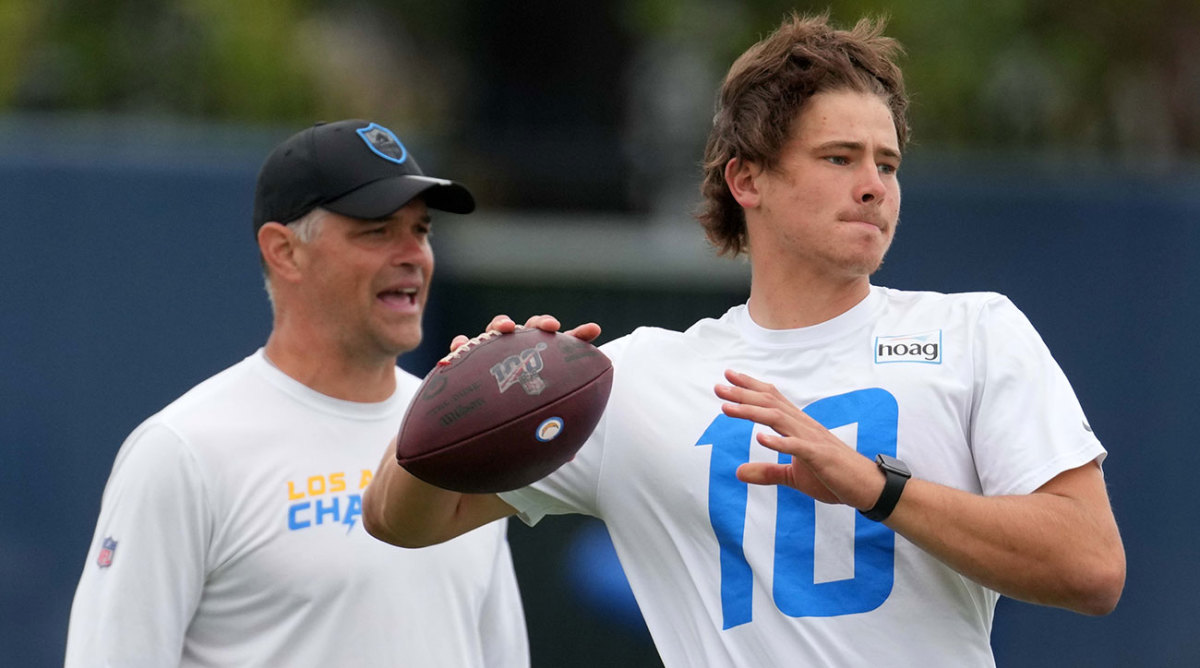
The easy thing for the Chargers to do in January, and what most people fully expected them to do, was always going to be to hire a young offensive coach in the model of the one Staley just worked for in 2020, on the other side of Los Angeles, to try and maximize Herbert in short order. The team interviewed a number of guys who fit that mold. And instead of following the well-worn script, they hired a 38-year defensive coordinator.
Herbert, it turns out, is already benefiting from that.
We’ll explain how.
It’s the final GamePlan of the spring, and we’ve got a lot to give you. Inside this week’s column, you’ll find …
• My DPOY, OPOY and MVP watch lists for 2021.
• What you can take from minicamps, re: Tua Tagovailoa.
• Why minicamp holdouts are going to keep coming in future years.
But we’re starting with Herbert, and how limitless what’s ahead for him could be with, yes, a defensive coach.
Now, the curveball (which you might know is coming)—Staley’s not exactly quarterback-illiterate either. He played the position for as long as he played the sport, reaching the Division I level as a two-year starter at Dayton, before transferring to Mercyhurst and starting a year there under Lombardi.
Herbert, and the rest of the Chargers, get reminders of that, too.
One came during this week’s minicamp. The team’s quarterbacks ran the sort of postpractice quarterback challenges that Drew Brees used to with the Saints. Staley won Day 1, a competition with the guys throwing at the goalposts. The coach then beat back the NFL quarterbacks again on Day 2, winning a laundry-basket challenge. Finally, on Wednesday, Day 3, with Brees himself in attendance, the tables turned on a skeet-shooting game—with the quarterbacks throwing the ball at discs fired when the passer yelled, Pull!
“And Justin blew us all out today,” Staley said. “He had a couple of throws, where Drew was like, ‘Oh, my God, he’s going to throw this out of the ... out of the stadium.’ ”
Brees was there with Al Michaels, doing the rounds for his new job at NBC, and in a certain way, his presence there was symbolic of where the Chargers are, ultimately, trying to get Herbert. And it’s not just the obvious—the records, the championship, the trips to the Pro Bowl and appearances on All-Pro teams.
More than that, it’s the total quarterback Staley wants Herbert to be, the kind Brees became, which, obviously, went beyond how tall he is or how hard he could throw the ball.
“I just got done talking to Drew and Al Michaels, and I just think there’s just that ultimate respect of what that position requires,” Staley said. “And that was fun for me, to hear Drew Brees talk about what he observed from him, just how special Justin is. And it goes far beyond just him throwing the football, which, it’s special and that definitely stood out to Drew. But just the intangibles as well, I think that’s at the heart of all.”
With that in mind, here’s how the Chargers are trying to get Herbert there.
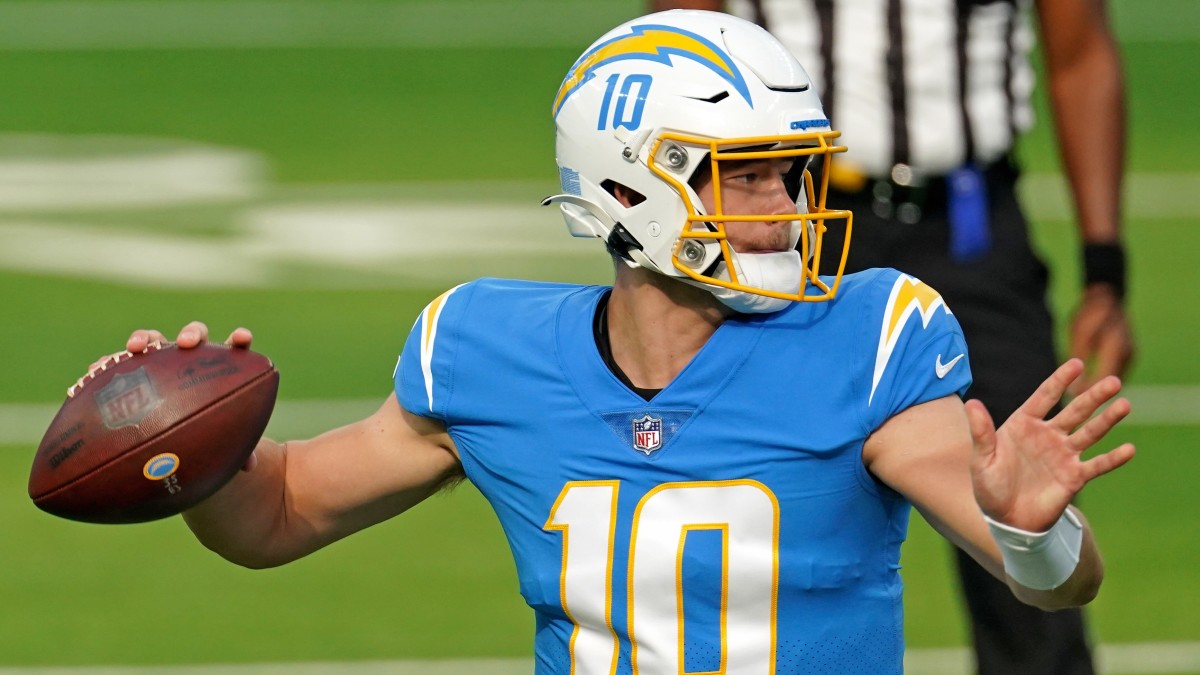
They’re building an offense for him, specifically. Yes, Lombardi’s offense is going to have all kinds of marks from New Orleans, where he spent 12 of the last 14 NFL seasons. But Herbert’s not Brees. And so while Staley wanted that scheme for the diversity it brings in personnel groupings, and how the passer is protected within the scheme, and just his own familiarity with it, the Chargers aren’t just lifting Sean Payton’s playbook and putting a powder-blue cover on it.
“It’s like, hey, When Drew throws all-go special, it may be different than how Justin sees it,” Staley said. “That timing, that anticipation, they are two different quarterbacks that way. Like how Drew may throw a Q route may be different than Justin, in terms of that timing and being able to talk through that, because there’s that same, Hey, I’ve run that play and this is how I did it. But this is how probably you could do it, because you’re different than I am. Those are all important points.”
In other words, the goal is, and has been, to find, within the context of a very successful scheme, what works tailored to Herbert’s skill set.
“Some of it comes down to identification from a protection standpoint, how much you’re going to put in the plan, on his plate,” Staley continued. “How much are you going to put in these calls? Double, triple calls, how much of that? What’s that sweet spot? And then in terms of the inventory of the throws, where is that ultimate comfort zone for him? Like, yes, he can make every throw on the field and he can throw it well. But what are those premium rhythm-type situations for him, that he can really express his talent and have full command over what we’re doing?
“I think that takes a little bit of time, and I think for him, it’s just really becoming that extension of the play-caller for us.”
Along those lines, getting Lombardi and Herbert to see the game through the same lens has been a focus, too. And this is where Staley’s experience as a defensive coach has him wanting something in his own offense that he’s had trouble with—a quarterback who can operate as a sort of pseudo coordinator, the way a Tom Brady or Aaron Rodgers can.
Part of that’s just experience, which will, admittedly, take time. But another is Herbert’s learning Lombardi, and vice versa, which is another level of the relationship-building process.
“What makes those two guys [Brady and Rodgers] specifically unique is that you’re eliminating one of the variables in the equation,” Staley said. “When they don’t need the coach, when they are the coach, that’s a much more dangerous person to have to defend, because you’re not waiting for the coach to help them. They know how to help themselves. And that’s what I think we’re trying to achieve.
“Like, when you play Aaron Rodgers, he’s aware of all 22 guys on the field, he’s aware of your sideline, he’s staring at your sideline, he knows your substitution patterns, he’s so aware of the time and score and the game situation. He is a human tendency report. He has that recall. He knows all those things. When you play against Tom Brady, there’s no look, there’s no disguise, there’s no situation that he hasn’t been through. And because they have all those experiences, they can operate much more effectively, because they don’t need that extra someone telling them what to do.”
At the point, they’re doing their jobs at a high level, Staley continued, “and they can help everybody else do their job, too. A quick reminder here or there, a signal, a protection check, getting us in and out of a play in a tough look, keeping us out of a bad play, all those end-of-game, end-of-half situations that are so critical, and they’re so aware of the time and score part of it, the timeouts, all that good stuff. And I think that that happens over time.”
And while Staley knows Herbert’s not going to be Brady, Rodgers or Brees overnight, he and his coaches can accelerate the process. One way they’ve done it: Through nine OTA and two minicamp practices, Herbert and the offense have taken about 65 to 75 reps per session. The 11-on-11 work is at a jog-through pace, with the idea being that the players’ feet are moving slowly, preserving their legs, but their minds are being trained to move fast.
“We put a lot on him because, most times in OTAs, maybe the starting quarterback gets 20 plays or something like that [per practice],” Staley said. “The way we were doing it, it was 65 to 75 plays in a script, which is a lot to prepare for. There was a lot of offense we put in.”
There was a lot of defense Staley put in, too, which was wholly by design. Coming from the Vic Fangio school, Staley believes in scheme diversity on that side of the ball, and that philosophy has spilled over to how he sees offense now, too. And so what that adds up to for Herbert is not only running a lot of offense, but also having to digest a lot of defense over those snaps in the spring.
Or to put it more succinctly, Herbert’s drinking from the proverbial firehose.
“And then they’re throwing a lot at us because we’re having to defend a lot. We’re having to defend one of the premium systems in the league,” Staley said. “And so there’s dual benefit on both sides. We’re having to defend a ton of groupings, a ton of formations, with a ton of motions, Keenan Allen, Mike Williams, Jared Cook, Austin Ekeler—they’re over there. It’s not full speed, but your mind is going full speed. Your mind is in this environment that we just had for four weeks. These guys are responsible for a lot.
“And we felt like because of it, we’ll be ready to have a really good training camp. And so at the front end of things, yeah, it’s going to be tougher on Justin from just a pure volume standpoint. But then we think cumulative effect will take over and that over time he will be really calm, because he’s been exposed to so much.”
Therein, Staley thinks, is how his experience in defending the best quarterbacks, rather than coaching them, should help bring more value to Herbert.
“What I told him is that that’s part of my philosophy of you prepare the player for the path, not the path for the player,” Staley said. “I think that that’s where the Belichick/Brady thing is really relevant, Mike Tomlin and [Ben] Roethlisberger, [Bill] Parcells and his quarterbacks, John Harbaugh and Lamar [Jackson], Tony Dungy and Peyton Manning, when you can teach them about the other side of the football, that helps with the acceleration of their learning.”
Staley, Lombardi and Day’s being open with Herbert on just why they’re handling things this way—teaching him calculus at a time when some just try to make sure their players are adding and subtracting correctly—is part of this, too. And building trust with Herbert in his knowing that everyone is building not just for the next week, but the next year and beyond.
“People don’t look at Aaron and Tom as they were when they were young; they see them now, like that full commander,” Staley said. “And so I think that in this day and age, that’s where the patience comes in. You have to build to that. Doesn’t happen overnight, certainly didn’t happen for Drew overnight. I mean, shoot, San Diego let him go before he became the Drew Brees that everybody knows.
“So I think that where Justin and myself and Joe, where we will get the furthest the quickest is by being completely connected. And there’s full transparency in what we’re doing, how we’re doing it, why we’re doing it, and just that ongoing dialogue comes in. When I think of those quarterbacks you’re talking about, it’s the ownership that they have.”
Which is where you come back to what Staley’s seen in Herbert that isn’t the obvious, that any of us can see by watching a handful of snaps from his starry rookie year. Which, in turn, Staley believes, is why while it’s exciting what Herbert is now, what’s way more interesting is how much better he can become.
“He’s got a lot of pride,” Staley said. “He doesn’t like it when he doesn’t know everything. He wants to know everything and have that full command and that full rhythm that the premium quarterbacks have. What was exciting for me to see was to see him struggle a little bit early. And then really have to fight to earn that command. And what he did from there? He really studied, he was on top of the scripts. …
“That’s a process that he really had to work hard at it this spring. It didn’t come to him right away, Albert. It didn’t. He had to really work it. And then these last two weeks, there’s been this explosion, in terms of his command in the operation, because he had to work on it. And there’s still more work to be done because in training camp, when it’s live, full-speed, live bullets, lot going on, then we’re going to learn even more.”
And the idea is that by pushing all these different buttons—from late-night texts to 70-play practice scripts in May—the Chargers are going to mine every bit of ability Herbert has.
And then, maybe we’ll see what the 6' 6", 236-pound dynamo is really capable of.
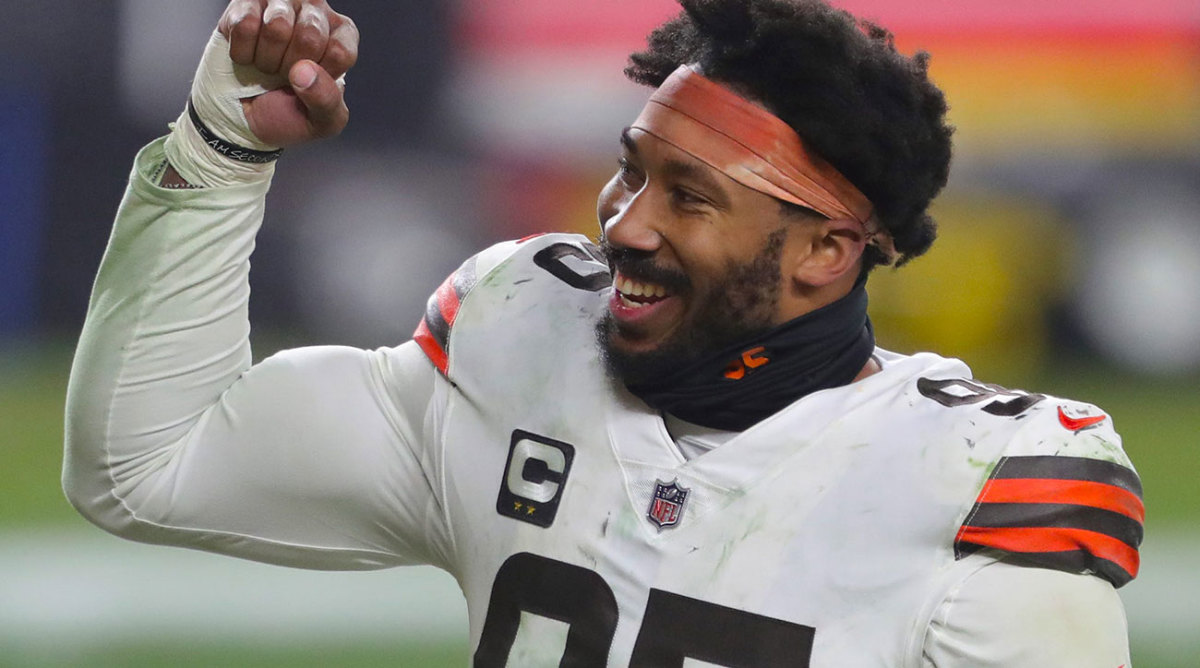
POWER RANKINGS
We’re concluding our 2021 award series today! So far, we have Washington LB Jamin Davis as DROY, Jaguars QB Trevor Lawrence as OROY, Cowboys QB Dak Prescott as Comeback Player of the Year, and the Saints’ Sean Payton as Coach of the Year. And because this is my final prevacation edition, we’ll give you three times the awards here: Defensive Player of the Year, Offensive Player of the Year and MVP. Let’s go (odds courtesy of sportsbettingdime.com, except for OPOY, because I couldn’t find odds for that one).
Defensive Player of the Year
1) Myles Garrett, DE, Browns (+600): Garrett’s been a top-of-the-NFL edge rusher for a while, and this year he’s getting Jadeveon Clowney as a bookend, and Greg Newsome and Troy Hill to complement Denzel Ward behind him. That should add up to more opportunity to run up his sack total, which will help him to win an award like this one.
2) Chase Young, DE, Washington (+1600): I think we’re going to see a breakout year (which is saying something, based on what he’d be breaking out from) from the reigning Defensive Rookie of the Year, with his own ridiculous ability, his defensive coordinator’s ability to showcase him and the first-round talent around him on the WFT defensive line all factors.
3) Jalen Ramsey, CB, Rams (+3300): Ramsey’s a little bit of a longshot, but he was great last year, and if the L.A. defense maintains its level going from Brandon Staley to Raheem Morris, and Aaron Donald’s numbers go from otherworldly to just plain great, I think the unit’s star corner might be in line to get credit for it.
4) Aaron Donald, DT, Rams (+400): This is not a knock on the best defensive player in the game. More so, it’s playing the law of averages. No one’s ever won DPOY four times. No interior defensive lineman’s ever had a four-year run like Donald is on (57.5 sacks over that time!). Donald’s 30 now. Eventually, it has to level off at least a little … right?
5) T.J. Watt, OLB, Steelers (+700): Watt’s a little like Garrett. It just feels like he’s going to win it at some point soon, so maybe this is the year.
Offensive Player of the Year
1) DeAndre Hopkins, WR, Cardinals: I just think Arizona is going to get him the ball a lot, the added speed to the offense (hello, Rondale Moore) is going to open things up for him and his team will be playing in a bunch of big TV games in what is, I believe, the most watchable division in the football. And by the way, QBs often do not win this award—two running backs and a receiver have won it over the last four years.
2) Stefon Diggs, WR, Bills: He 100% could have won it last year, even though he didn’t get a vote for it. Another 127 catches, 1,535 yards and eight touchdowns, and I’ll bet that would change.
3) Jonathan Taylor, RB, Colts: In my Wednesday mailbag, I picked Taylor to win the rushing title, so I might as well go all-in with the second-year pro. My sense is he’ll be the focal point of what should be a really good offense, in helping to fuel a team that should be back in the playoffs.
4) Patrick Mahomes, QB, Chiefs: Hard to leave him off any list like this. And I could see a scenario where another quarterback takes home MVP and Mahomes gets OPOY as an acknowledgment of his greatness (or just a way for voters to split the baby).
5) Derrick Henry, RB, Titans: If he’s who he’s been the last two years, he’s at the top of the list. Can he do it again? Based on his career workload and the history of his position, I think it’s hard to count on that. Then again … there haven’t been many tailbacks built like him.
Most Valuable Player
1) Patrick Mahomes, QB, Chiefs (+400): Mahomes is the only player with better than 10-to-1 odds to win MVP, and rightfully so. He’ll likely go into every season in the foreseeable future as the favorite for this award.
2) Tom Brady, QB, Buccaneers (+1200): My feeling is the way Brady finished last year brought a renewed appreciation for who he is, which I believe will spill over into this coming year if the good times keep rolling. If the Bucs go, say, 13–4 and he throws for another 4,500 yards, he’ll be squarely in the running.
3) Matthew Stafford, QB, Rams (+1600): An easy way to think of this: Sean McVay got great runs out of Kirk Cousins and Jared Goff, so what might be possible with Stafford? A lot, I think. Stafford should be really, really good in that offense.
4) Russell Wilson, QB, Seahawks (+1600): These awards sometimes hinge on story lines, and Wilson could have a pretty good one if he can find a fairytale ending for what’s been a rocky offseason in Seattle. Also, these aren’t your older brother’s Seahawks, from a roster standpoint, so if Seattle wins the West, Wilson will get a lot of credit for it.
5) Justin Herbert, QB, Chargers (+2000): A breakout sophomore season’s always provided a path to this award. Carson Wentz almost won MVP in his second year. Mahomes and Lamar Jackson did win MVP in their respective second years. And so here’s Herbert, with a new coaching staff and a loaded skill group around him. He gets the slight nod over Josh Allen to land fifth on this list.
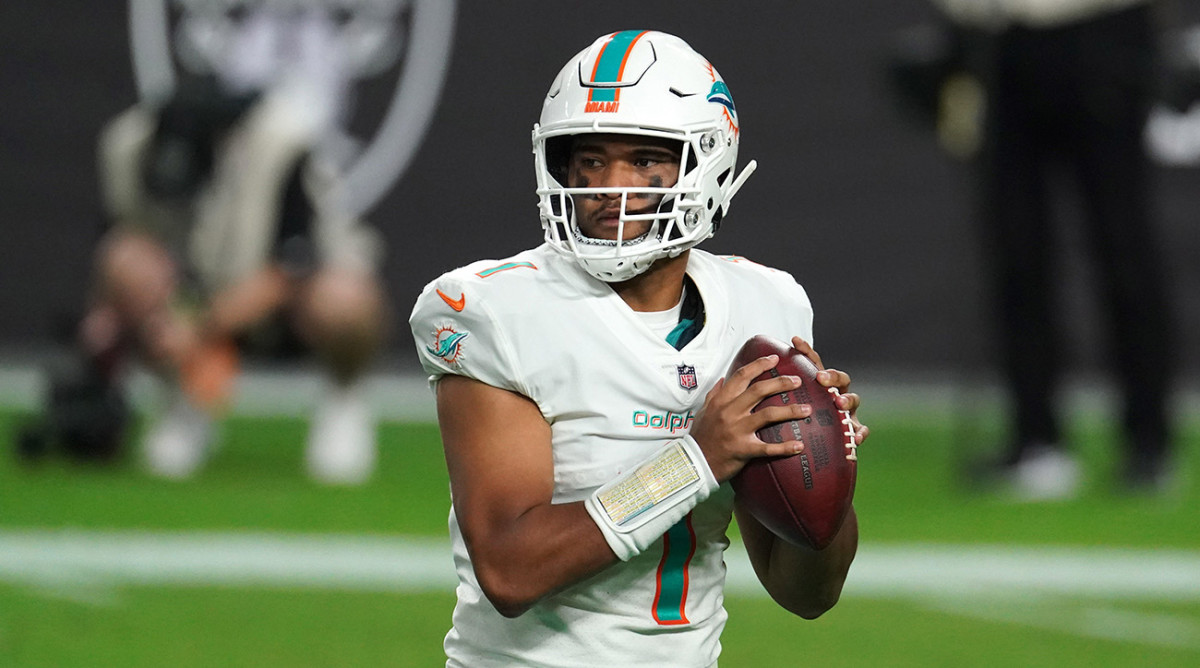
THE BIG QUESTION
How much can be gleaned from OTAs and minicamp?
On Tuesday, Dolphins QB Tua Tagovailoa threw five interceptions in a minicamp practice, leading to a social media firestorm of analysis on what exactly the 2020 first-round pick’s mid-June faceplant meant. For his part, Tagovailoa addressed it up-front, telling reporters those were aberrations of aggression. “That’s just been the emphasis for us, coming to this first day of minicamp, was just to be aggressive, push the ball downfield,” he said.
“I don’t think Tua’s going into a shell,” Miami coach Brian Flores affirmed. “I’ll tell him to continue being aggressive.”
Reaction to all this has been binary. On one side, there’s the “You’re an idiot for even keeping those statistics!” crowd. On the other, there are people who tie it to Tagovailoa’s up-and-down rookie season, during which he went 6–3, but he endured multiple benchings and clearly looked behind draft classmates Joe Burrow and Justin Herbert.
The truth is probably somewhere in the middle, as it usually is.
I checked in with some scouts and ex-players on Wednesday morning to ask them what they take from something like this when they see it. One ex-quarterback responded with a list of questions. What was the down-and-distance on the throws? The clock? What were they working on? Was he being asked to throw to a certain receiver? Is it a test in seeing where the quarterback can put the ball? Which receivers were with him? Which defense? Did the picks come in 7-on-7 when he has to throw it somewhere and everyone might’ve been covered?
All those things are relevant. This is, too: One ex-co-worker of Flores’s emphasized to me how Patriots and Patriots-connected programs use the spring as a sort of Football 101. That means teaching, conditioning and fundamentals, with the focus being on getting the roster ready for training camp, rather than having players necessarily competing for their place on the team. And for established players, that manifests in trying to set a foundation to build on for camp, and what the coaches will and won’t focus on when they get there.
So the idea they could be taking certain ideas or concepts for a test drive makes sense, since this is the time of year that Flores and his staff theoretically would be doing that.
That said, the ex-co-worker of Flores’s conceded, “It’s really hard to throw five interceptions in practice.” Another ex-player said that, with the better quarterbacks he’d played with, seeing three in one day would be rare, and only a one-off. And if this is a one-off, then fine. But if he’s already had a shaky string of practices (there’s no way to know, since most of the OTAs were closed sessions) and this was a sort of crescendo, that’s something else.
It’s also worth noting that if legitimate, and just circumstantial, interceptions are happening now, at a lower level of intensity, they probably won’t disappear when things are more competitive in training camp. All of which is to say, there really isn’t a day you want to be throwing that many picks, regardless of the weather (it was bad) or situation.
“I honestly don’t think too much of it, seeing those numbers,” said an NFC exec, who’s worked in pro scouting. “The thing I’d wonder about, it’s not necessarily how he’s going to respond, because he got to this point, he’s confident, he’s talented, he’s battle-tested, it’s more how his teammates respond. You throw two or three picks in a day, O.K., that happens. But five? I’d just be concerned that guys in the locker room might be like, ‘Holy s---, what do we have here?’ ”
And on the flip side, maybe there was something the offense was trying to accomplish, or some other element, that led to this. It’s hard to say without being in the room. We’ve seen guys have rough practice days (Mahomes was one, Jimmy Garoppolo was another) like this and make any of this sort of discussion seem stupid months later. We’ve seen, on the other end, where it actually did foreshadow something (Josh Rosen two summers ago in Miami).
So while it’d be ridiculous to draw any conclusions on what this means for Tagovailoa, it’s probably worth filing away for now, and seeing if it turns into some sort of pattern.
(And that’s probably more than enough words on that.)
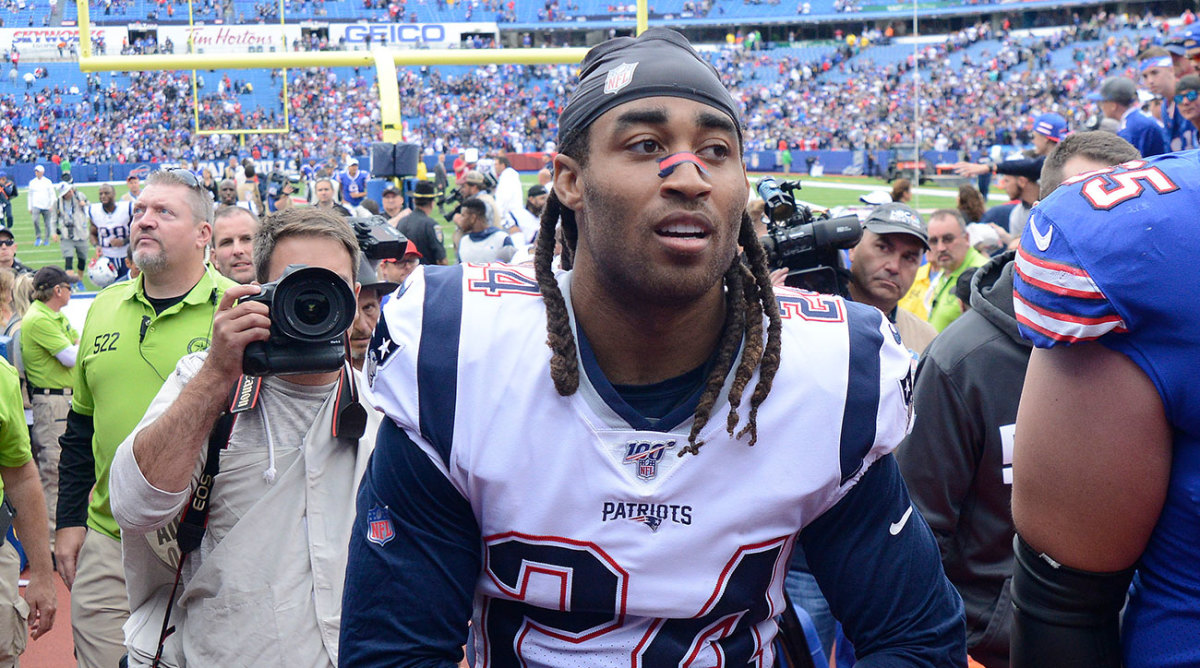
WHAT NO ONE IS TALKING ABOUT
How players are using minicamp to make their point now.
I don’t know if Aaron Rodgers, Jamal Adams or Stephon Gilmore are entrenched enough in their positions to take what we can now call holdouts into training camp. But I do know that this is the time of year for cages to be rattled with teams from here on out.
And the reason why is predictable: money.
Rodgers, Adams and Gilmore are each subject to $93,085 in fines for missing the three days of minicamp ($15,515 for Day 1, $31,030 for Day 2 and $46,540 for Day 3), and even for guys who’ve made good money (and those three have), that’s not nothing. But if you’re looking for a lot more, it’s not a terrible sunk cost to make a point, and teams do have the flexibility to excuse these June absences as showings of goodwill.
That all changes starting in late July. That’s when teams are required to fine guys $50,000 per day and can go after signing bonus money, and when the players lose a credited year toward free agency and postcareer benefits. And when you get to the preseason games, players stand to lose a lot more (the equivalent of a game check for each one missed), and none of these fines can be forgiven (they used to be forgiven after holdouts routinely).
So if you’re a player who wants to turn the temperature up on contract talks, skipping the voluntary portion of the offseason program and then, if you need to, the minicamp, really is the way to go.
Think about it like this: These minicamps usually close the offseason program, so missing the minicamp will cost you $93,085, tops, and then the team knows you’re gone for five weeks after that, which is a lot of runway with which both team and player can work on some sort of new deal. Conversely, if you sit the first three days of training camp? That’ll be $150,000. And then what? Then, you report and make the holdout look toothless? Or you keep running the $50,000/day tab up?
Bottom line, the smart thing, for any player, is to make your point now. Rodgers is sort of separate from the other two we named (you might say it’s more … complicated). But for Gilmore and Adams? This is the time to show the team you’re serious. And in a month or so, we’ll know whether it worked—or whether those guys are willing to take things to the next level.
THE FINAL WORD
This being the last GamePlan before the run-up to training camp, I wanted to thank all of our loyal readers for coming back and checking out the column on a week-in, week-out basis through the NFL’s “dead” months (as you all know, it’s never really dead), and my editor Mitch Goldich for putting up with me and my finicky filing schedule.
See you Monday morning.
More NFL coverage:
• Breer: Carson Wentz Enjoying His Transition to Indianapolis
• Vrentas: What You Need to Know About the Deshaun Watson Lawsuits
• Orr: Six Losing Teams in 2020 That'll Make the Playoffs in 2021
